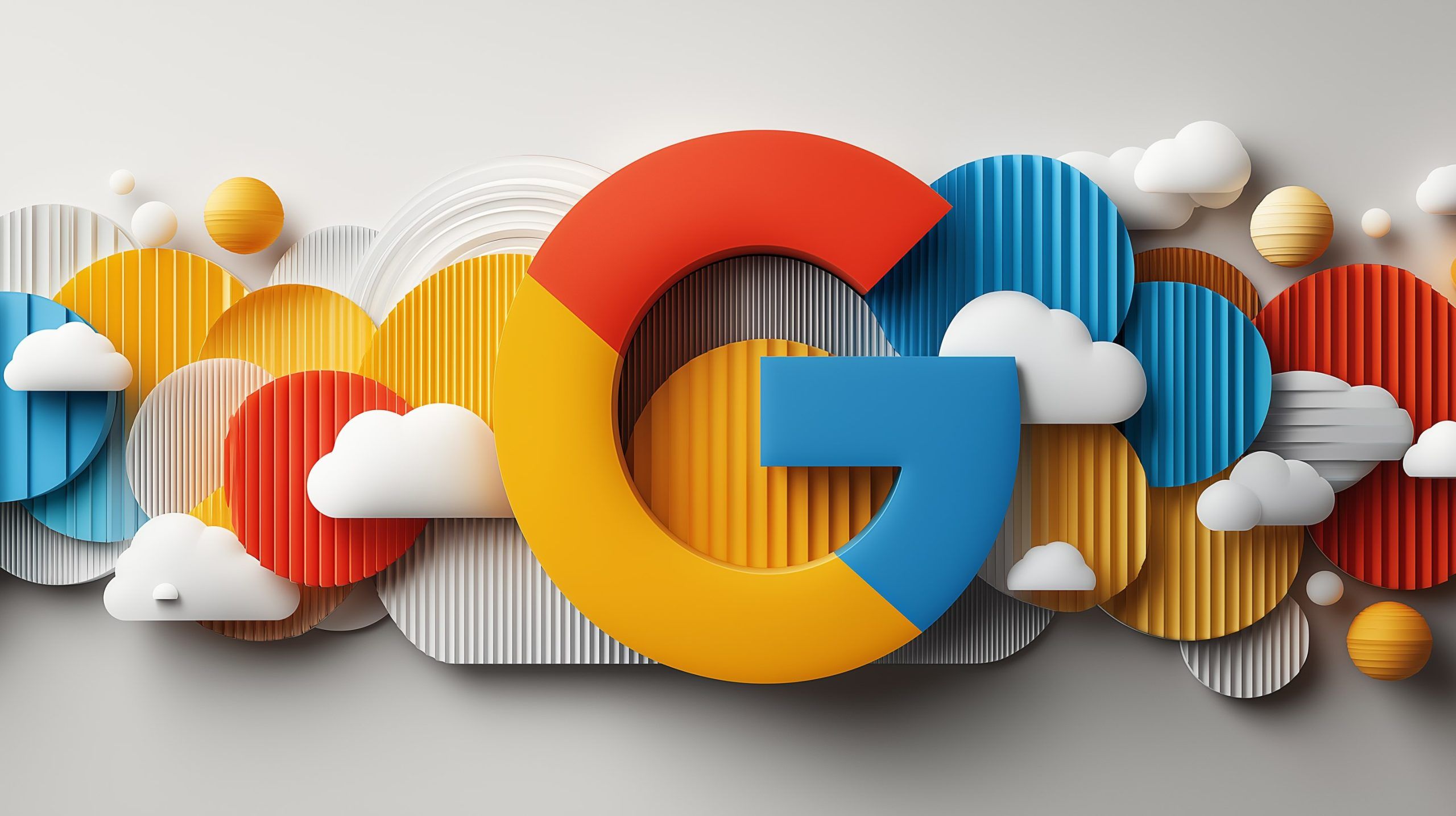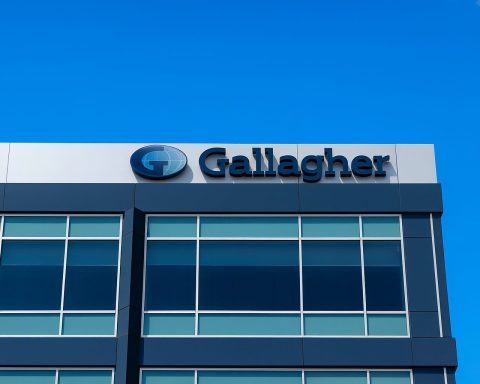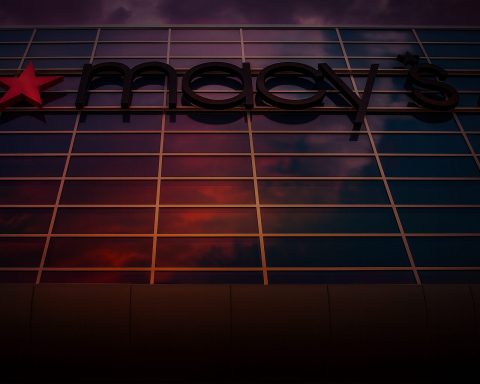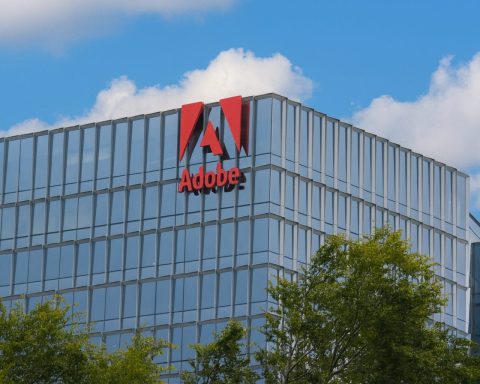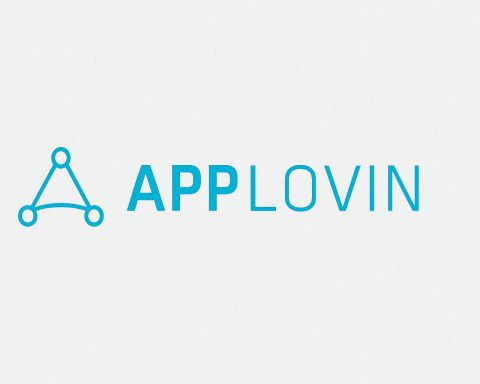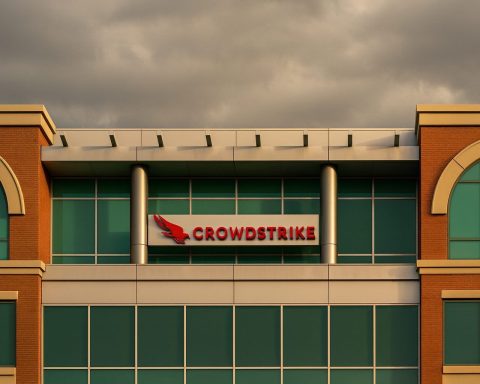- Vertex AI is Google’s unified platform for developing, training, and deploying machine learning models at scale, integrating data preparation, pipelines, MLOps, and model monitoring with AutoML.
- Gemini is Google’s multimodal foundation family for text, code, and images, with Gemini 2.5 “Flash” announced in 2025 as a smaller, cost-efficient variant, plus Lyria for music and Imagen for images and Veo for video.
- Vertex AI Model Garden lets customers deploy Google’s own models or popular open-source models on Google Cloud.
- Google Cloud’s AI hardware includes Cloud TPU v5e for training and the upcoming 7th‑generation TPU named “Ironwood” for inference, with TPU v5e delivering up to 2.5× better inference per dollar than the previous generation.
- Over 4 million developers are building with Gemini models on Vertex AI, and Vertex AI usage has grown 20× over the past year.
- Next ’25 introduced Vertex AI Agents and an AI Agent Marketplace, along with an open‑source Agent Development Kit and the Agent2Agent protocol for cross‑vendor interoperability.
- Google Workspace’s Duet AI provides AI assistance across Docs, Sheets, and Gmail, with more than 2 billion AI assists per month by early 2025.
- Google Distributed Cloud enables Gemini models and Agentspace to run on‑premises, while Cloud WAN delivers up to 40% latency improvements for enterprise networking.
- Strategic partnerships include Hugging Face (2024) for open‑model support on Vertex AI, Anthropic Claude available on Vertex AI, and collaborations with SAP, Mayo Clinic, Deloitte, and Accenture, alongside Amazon’s $4 billion Anthropic investment that made AWS the primary cloud for Anthropic workloads.
- Regulatory and trust measures center on the EU AI Act finalized in 2024, with Google Cloud stating it does not use customer data for training without consent, and deploying model cards and an AI risk framework for transparency.
Overview of Google Cloud AI and Core Offerings
Google Cloud AI refers to the broad portfolio of artificial intelligence and machine learning services available on Google Cloud Platform (GCP). It enables developers and organizations to leverage Google’s cutting-edge AI research and infrastructure without needing to build everything from scratch. At the heart of Google Cloud’s AI offerings is Vertex AI, a unified platform for developing, training, and deploying machine learning models at scale. Vertex AI combines Google’s powerful AI tools into one environment – from data preparation and model training to MLOps, pipelines, and model monitoring – reducing the complexity of building custom models [1]. It even supports AutoML capabilities, allowing users to train high-quality models with minimal coding or ML expertise [2]. In addition, Google Cloud AI provides a rich set of pre-trained AI APIs that developers can simply call to add intelligence to applications, without needing to train models themselves. These APIs cover vision, speech, language, translation, and more:
- Vision AI – Cloud Vision API for image recognition, object detection, facial recognition, optical character recognition (OCR), and content tagging [3]. This lets apps understand images and videos by tapping into Google’s trained vision models (e.g. classifying images into thousands of categories or detecting text in images).
- Speech AI – Speech-to-Text API to transcribe audio into text with high accuracy (useful for voice commands or transcription) [4], and Text-to-Speech API to convert text into natural-sounding human speech for IVRs or voice assistants [5].
- Natural Language AI – Natural Language API to analyze text, extract meaning, detect sentiment, and classify content [6]. This can power use cases like understanding customer emails or sorting documents by topic.
- Translation AI – Translation API for fast, dynamic machine translation in dozens of languages [7], enabling multilingual content and localization features.
- Conversational AI – Dialogflow CX, a conversational AI platform (part of Contact Center AI), to design and deploy chatbots and virtual agents that understand user intents and even leverage generative models for richer replies [8]. This helps companies build natural, multi-turn conversation experiences in apps, websites, or contact centers.
Beyond these, Google Cloud offers specialized solutions like Document AI (automating document processing with OCR and form parsing, including pre-trained models for invoices, contracts, etc. [9]) and Contact Center AI (a solution combining Dialogflow with phone call speech models [10] to assist call center operations). There are also industry-specific AI services such as Recommendations AI for product recommendations in retail, Vision Product Search for retail image search, and more – showcasing how Google Cloud AI can be applied across domains.
Notably, Google Cloud has heavily invested in generative AI and large-scale “foundation models” in recent years. Google’s own advanced neural networks – like the PaLM and Gemini model families for text and multimodal tasks – are available via the Vertex AI platform. Developers can access these foundation model APIs (hosted models) and customize them for their needs [11]. For example, the generative AI APIs include models that handle text completion and chat (similar to GPT-style models), code generation (code models like Codey), image creation (the Imagen model for AI-generated images), and even audio and video generation (Google’s Veo for video, and new models for speech and music) [12] [13]. Through Vertex AI Model Garden, customers can pick from Google’s models or popular open-source models to deploy on GCP. Google has introduced state-of-the-art multimodal models – Gemini (for text, code, and images) and specialized generators for images (Imagen), video (Veo), and music (the Lyria model, introduced in 2025) – making Google Cloud “the only platform with generative media models for video, image, speech and music” [14]. These models can be fine-tuned with one’s own data via Vertex AI, enabling use cases like generating marketing content, answering questions in conversational apps, or producing synthetic media.
Underpinning all these services is Google’s robust cloud infrastructure and AI middleware. Google Cloud provides AI-optimized hardware such as GPUs (NVIDIA A100/H100) and Google’s custom TPUs (Tensor Processing Units) for training and running models. In fact, Google’s latest TPUs (like Cloud TPU v5e for training and the upcoming 7th-gen TPU named “Ironwood” for efficient generative AI inference) offer exceptional performance per dollar [15] [16]. Developers can also use whichever ML framework they prefer – TensorFlow (developed by Google), PyTorch, JAX, scikit-learn, etc. – on Google Cloud’s AI Platform. Google Cloud’s commitment to openness means it supports popular open-source AI frameworks and tools at a first-class level. (Google’s own TensorFlow and Keras originated in its research labs, and it actively supports JAX for high-performance research modeling). This open ecosystem approach is evident in partnerships like its 2024 Hugging Face collaboration, which makes it easy to train and deploy hundreds of open-source models on Vertex AI. As part of that partnership, Google Cloud became a strategic cloud provider for Hugging Face, giving developers one-click access to models from the Hugging Face Hub on Google’s infrastructure [17] [18]. In short, Google Cloud AI offers everything from ready-to-use AI building blocks up to the “do it yourself” flexibility to build and scale custom models – all built on Google’s two decades of AI expertise in things like search, computer vision, and language understanding.
Strengths and Differentiators vs. AWS and Azure
Google Cloud’s AI platform brings some clear strengths and unique differentiators in the competitive cloud market. While Amazon Web Services (AWS) and Microsoft Azure are also investing heavily in AI, Google leverages its deep AI research pedigree and open-source ethos to stand out. Here are some of the key advantages of Google Cloud AI:
- World-Class Models and AI Research Integration: Google has been a pioneer in AI research – from inventing the Transformer architecture that underpins modern NLP to breakthroughs in computer vision and recommendation systems. Google Cloud directly channels this research into products. For example, Google’s flagship large language models (like PaLM 2 and the multimodal Gemini) are built by Google’s AI teams (Google Brain/DeepMind) and offered on GCP, giving customers access to incredibly advanced models tuned with Google’s vast data and expertise. Google CEO Sundar Pichai noted that Google’s “differentiated full-stack approach to AI” – integrating everything from cutting-edge chips to advanced models – is driving strong customer demand on Google Cloud [19]. Unlike Azure, which primarily offers OpenAI’s models (GPT-4, etc.) via a partnership, or AWS, which offers a menu of third-party models (through Amazon Bedrock) but no proprietary foundation model of its own, Google can offer its own state-of-the-art models and still embrace others. This blend of first-party AI IP and open ecosystem is a strategic edge.
- Open-Source Support and Ecosystem: Google Cloud has a reputation for being developer-friendly and supportive of open-source AI innovation. Google is the home of TensorFlow, and it continues to support PyTorch, XLA, Kubernetes, and many other open technologies that AI practitioners use. A notable differentiator is Google’s collaboration with Hugging Face in 2024 to facilitate open-source AI on its platform. Thomas Kurian (Google Cloud’s CEO) emphasized that this partnership ensures Hugging Face developers get access to Google’s “purpose-built AI platform, Vertex AI, along with our secure infrastructure,” accelerating the next generation of AI applications [20]. Clement Delangue, CEO of Hugging Face, praised Google’s contributions: “From the original Transformers paper to T5 and the Vision Transformer, Google has been at the forefront of AI progress and the open science movement… together we will enable developers to leverage the latest open models with optimized infrastructure like Vertex AI and TPUs” [21]. In practice, this means Google Cloud customers can easily tap into a vast library of models (from Google or the open-source community) and run them on GCP’s optimized hardware. Google’s open and multi-cloud philosophy (embodied in tools like Anthos and partnerships that allow interoperability) contrasts with the more closed ecosystems of competitors. For instance, Google allows hybrid and on-prem deployment of its AI solutions (e.g. bringing Vertex AI services to on-prem data centers via Google Distributed Cloud), and even allows customers to integrate Google’s models with other platforms – flexibility that appeals to enterprises avoiding lock-in [22].
- Custom AI Infrastructure (TPUs) and Performance: Google’s vertical integration of hardware and software for AI gives it a performance edge in certain scenarios. GCP’s Tensor Processing Units (now on their 5th generation for training and 7th for inference) are purpose-built chips for AI workloads, offering exceptional price/performance for large model training [23]. Google Cloud was early to offer NVIDIA’s latest GPUs as well (such as A100 and H100 in its A2 and A3 instances), but the TPUs differentiate its platform – customers can train giant models (vision models, transformers, etc.) on exascale supercomputer clusters powered by TPUs (as Google did internally for its own research). This tight integration of hardware accelerators with Google’s software stack means lower latency and higher throughput for AI tasks on GCP. In a January 2024 press release, Google touted that Cloud TPU v5e offers up to 2.5× better inference performance per dollar than the previous gen, and highlighted upcoming support for Nvidia H100-powered A3 VMs for even more options [24]. In short, for organizations pushing the limits of AI (training billion-parameter models or serving massive throughput), Google’s cloud infrastructure is highly optimized for AI. AWS and Azure also provide ML hardware (AWS has its proprietary Trainium/Inferentia chips and Azure offers Nvidia GPUs), but Google’s ability to co-design the full stack – from chip to data center network to AI framework – often yields leading performance benchmarks and cost-efficiency for large-scale AI workloads [25].
- Data Analytics and “Google Quality” AI Services: Google Cloud’s strength in data goes beyond AI models – it also has world-class data analytics (BigQuery, Dataproc, Looker) that integrate with AI services. This makes it easier to preprocess data for ML and to deploy AI results at scale. Moreover, Google is uniquely positioned to offer knowledge-powered AI. For example, Google’s Vertex AI Search and Generative AI App Builder can ground AI answers in factual data using Google’s search algorithms. Google Cloud Next 2025 announcements included an AI Agent Builder that orchestrates enterprise search over your data with Google-quality search relevance [26]. Google’s expertise in search is a differentiator – e.g., an enterprise can build a chatbot that provides answers based on internal documents, with the retrieval augmented by the same tech that powers Google Search. This helps ensure generative AI responses are grounded and accurate, tackling a common challenge (hallucinations) better than competitors. Google Cloud also boasts specialized AI solutions (like Contact Center AI or anti-fraud AI) that bundle Google’s know-how for specific industries (e.g. call transcription with sentiment analysis for customer support). These “pre-packaged” AI solutions often leverage Google’s best-of-breed models under the hood.
- Security, Privacy, and Compliance Leadership: Enterprise customers often evaluate trust and compliance as a differentiator. Google Cloud has made strong commitments around data privacy in AI services – for instance, it clearly states that customer data is not used to train Google’s models without permission [27] (addressing a fear some have with cloud AI platforms). It provides features like encryption of custom model weights with customer-managed keys [28] and robust access controls for sensitive data in AI workflows [29]. Google also leads in AI responsible practices, following its AI Principles to avoid misuse (e.g., it won’t support certain surveillance or harmful applications [30]). For companies in regulated sectors or those concerned about upcoming laws (like the EU’s AI Act), this focus is a plus. Google Cloud has been proactive about AI regulation, preparing tools and documentation to help customers comply with new rules (e.g., model cards for transparency and an AI risk framework) [31] [32]. In short, Google’s emphasis on responsible AI and its global network of cloud regions help enterprises meet sovereignty and compliance needs. This emphasis on trust and safety differentiates it from a “move fast” approach; Microsoft and OpenAI, for example, had some high-profile criticisms around rushed releases, whereas Google tends to stress testing and safe deployment (though sometimes at the cost of being later to market). For risk-sensitive organizations, Google’s balanced approach can be appealing.
It’s worth noting that Google Cloud’s AI momentum has been growing relative to competitors. Even though Google Cloud is the third-largest cloud provider by revenue (after AWS and Azure), it is punching above its weight in AI wins. One industry analysis found that Google’s share of publicly announced cloud AI projects is about 17%, which is almost double its overall cloud market share (~9%) [33]. In other words, companies that might not use Google for everything are still turning to Google Cloud specifically for AI solutions at a higher rate. Major enterprises like Merck (pharmaceuticals) and Priceline (travel) have recently adopted Google Cloud AI in their businesses [34]. This suggests that Google’s strengths in AI are helping it win new customers even in an intensely competitive market. Microsoft Azure has certainly gained a lot of mindshare by partnering with OpenAI (giving Azure customers early access to GPT-4 and other models, which helped Azure secure ~45% of new cloud AI deals in one survey) [35]. AWS, for its part, remains a dominant cloud player and has focused on offering a breadth of AI services and model choices (and recently invested in Anthropic to bolster its AI offerings). But Google’s strategy of combining its own AI breakthroughs, an open ecosystem, and enterprise-focused features appears to be paying off in carving out a strong position in the AI cloud race.
Limitations and Criticisms of Google Cloud AI
No platform is without its challenges, and Google Cloud AI has faced some criticism or limitations noted by users and analysts. Despite its strengths, customers and observers have pointed out a few areas where Google’s AI platform isn’t perfect:
- Steep Learning Curve and Complexity: Because Google Cloud’s AI offerings are so extensive and feature-rich, new users can find the ecosystem overwhelming. Navigating Vertex AI’s many options (from Notebooks, Pipeline orchestration, Feature Store, to custom model deployments) may be daunting for beginners or teams coming from a simpler interface. Users have reported that the learning curve can be steep, especially for those unfamiliar with GCP’s way of organizing resources [36] [37]. The platform’s documentation and UI, while improving, have been described as confusing by some. For example, managing projects, permissions, and understanding how to move experiments from development to production in Vertex AI requires careful study. This contrasts with, say, some of the more guided experiences on AWS SageMaker or Azure ML Studio. In summary, Google Cloud AI is powerful but not always the easiest to get started with – a trade-off that can slow down adoption for some teams.
- Cost Considerations: Many users praise Vertex AI’s capabilities, but cost is a common concern. Running large-scale training or serving high-volume predictions on Google Cloud’s premium infrastructure (TPUs, GPUs, etc.) can become expensive. On G2 (a software review site), reviewers noted that Vertex AI’s costs can “escalate quickly, especially with large-scale training and complex options” [38]. There are reports of unexpected bills when users do not fully understand the pricing for generative model usage or forget to shut down expensive instances. While Google Cloud offers $300 free credits to get started and has cost management tools, some find it tricky to optimize AI workloads for cost. Competing platforms have similar challenges (AI isn’t cheap on any cloud), but AWS and Azure have longer histories of granular cost optimization features which some customers are more familiar with. Google is working to make AI more affordable (for instance, the Gemini “Flash” models are optimized for lower-cost inference [39]), but budget-conscious customers still need to architect carefully to avoid sticker shock.
- Market Perception and Ecosystem Catch-up: Google Cloud, in general, trails AWS and Azure in market share, and this can influence perceptions of its AI platform. Some enterprises have longstanding relationships with the other clouds and thus are slower to consider Google Cloud for new AI projects. A criticism often levied at Google historically was its enterprise support and sales execution, though this has improved under CEO Thomas Kurian. Still, there can be a hesitation to go “all-in” on GCP for risk-averse CIOs who see it as the No.3 provider. The ecosystem (third-party integrations, readily available consultants, etc.) around Google Cloud AI, while growing, is not as large as AWS’s. This means companies might find it harder to hire experienced GCP AI architects compared to AWS ML experts, for example. Google has been actively addressing this with training and partner programs, but it remains a consideration. Additionally, Google’s propensity to evolve or deprecate services has made some wary – for instance, older Google Cloud AI services (like the standalone AutoML APIs) were merged into Vertex AI, which was a positive consolidation, but it required users to migrate to new interfaces.
- Being Late on Some Features: Ironically, Google’s cautious approach to responsible AI also meant it was somewhat late to openly release some generative AI products. For example, OpenAI (backed by Microsoft) grabbed the early lead in large-scale generative AI, which Azure capitalized on by offering ChatGPT/GPT-4 to its customers in 2023. Google’s equivalent (PaLM API and later Gemini) came a bit later to external customers. Some critics felt Google “missed the boat” initially or was too conservative in waiting to ensure AI safety, thereby ceding mindshare to OpenAI/Microsoft. While Google has since caught up – releasing PaLM 2, Gemini, etc., and integrating generative AI across its portfolio – the initial delay is sometimes viewed as a strategic misstep. Google’s own employees had voiced concerns (in 2021–22) that the company was hesitant to deploy AI products (like not integrating its most powerful language models into consumer products fast enough), possibly due to reputational risk. In the fast-moving AI race, perception matters, and Google has had to work hard to dispel the notion that it’s following rather than leading in generative AI. The flip side is that Google’s AI offerings now are quite comprehensive; but this history is a reminder that even an AI leader can stumble if it doesn’t read the market’s hunger for new tech.
- Partnership Tensions and Customer Trust: Another limitation arises from Google’s dual role as an AI researcher and cloud provider. In some cases, Google Cloud’s pursuit of its own AI models may complicate partnerships. A prominent example was Google’s investment in Anthropic, an AI startup building a rival to GPT-4. Google invested ~$300 million in Anthropic in 2022 and made Anthropic’s Claude models available on Vertex AI [40]. However, in late 2023, Anthropic chose to take a much larger investment (up to $4 billion) from Amazon and named AWS its primary cloud provider for critical workloads [41]. This development – essentially seeing a key AI partner ally with a rival cloud – was a bit of a blow to Google Cloud. Reports emerged that around that time Google’s engineers had to scramble to fix performance issues on GCP’s infrastructure for Anthropic (such as scaling up an unstable Nvidia H100 GPU cluster) [42] [43]. While Anthropic continues to work with both clouds, Amazon’s deeper ties mean Google must compete to retain those AI workloads. The episode exposed a criticism that Google might not have been as prepared or willing to offer the level of support/incentives needed to keep a big AI star exclusive. It raises the question of whether Google will prioritize its own models (Gemini) over third-party ones – something customers and partners will watch closely. In general, some analysts have pointed out that Google’s strategic focus is split between building AI (for itself) and selling AI services (to customers) [44]. Balancing these isn’t a trivial challenge; for example, if Google uses its best AI advances primarily to enhance Search or its ads business, cloud customers might wonder if they’re getting second-priority. So far, Google Cloud is aiming to “do it all” – develop leading AI and offer it impartially – but the competitive dynamics (like the Anthropic situation) illustrate the complexities involved.
In summary, Google Cloud AI is extremely powerful, but new adopters should be mindful of the platform’s complexity and cost, and the broader market context. Many of these limitations are being actively addressed by Google (e.g., better docs, more pricing options, clear commitments on data privacy). Nonetheless, prospective users often pilot the services first, keep an eye on cost dashboards, and ensure they have GCP expertise on board to get the most value out of Google’s AI offerings.
Latest News and Announcements (as of July 2025)
The AI landscape is evolving rapidly, and Google Cloud has made a flurry of announcements in 2024 and 2025 to push its advantage in AI. As of mid-2025, here are some of the most significant developments around Google Cloud AI:
Continued Generative AI Push – New Models and Features: 2024 was a breakout year for generative AI on Google Cloud, and 2025 has only accelerated that momentum. At Google Cloud Next ’25 (a major event held in April 2025), Google announced a slate of updates centered on generative AI. One headline was the progress of Google’s flagship foundation model Gemini. Google revealed that over 4 million developers are now building with Gemini models on Vertex AI, contributing to a 20× increase in Vertex AI usage over the past year [45]. The Gemini family saw upgrades – for example, a new version Gemini 2.5 “Flash” was unveiled as a smaller, cost-efficient model optimized for fast responses [46]. This is designed to help customers deploy generative AI apps with lower latency and expense (ideal for real-time assistants, etc.). Google also rolled out support for multimodal generative AI across the platform. With the introduction of the Lyria model in 2025, Vertex AI now offers generative models spanning video, image, speech, and music – making Google Cloud unique in having all these media types covered natively [47]. For instance, customers can use Imagen for images, Veo for video generation, Chirp/universal speech models for audio, and MusicLM/Lyria for music generation, all through a unified API. These capabilities open up creative new applications (from generating marketing videos to composing background music or realistic speech). Google also expanded its Generative AI Studio tools in Vertex AI, making it easier to prototype and tune these models with a user-friendly interface.
AI Agents and Applications: Another notable set of releases at Next ’25 focused on making AI usable in real-world scenarios via AI agents. Google introduced Vertex AI Agents and an AI Agent Marketplace where enterprises can find pre-built agents (for example, chatbots specialized for finance, customer service, etc.) [48] [49]. It’s essentially an app store for AI agents created by Google or partners, which companies can deploy and customize. To further empower developers, Google open-sourced an Agent Development Kit (ADK) and introduced an open protocol called Agent2Agent (A2A) that lets agents from different vendors communicate [50] [51]. This is an interoperability move – acknowledging that businesses might use multiple AI agents, and they should work together. All of this underscores Google’s strategy to position Vertex AI not just as a model hosting platform, but as a full solution for building AI-powered applications (from the underlying models to the orchestration and front-end experience). In Workspace (Google’s productivity suite), Google also integrated Gemini via features called Duet AI, offering AI assistance in apps like Docs, Sheets, and Gmail. By early 2025, Workspace users were getting over 2 billion AI assists per month (autocomplete suggestions, smart replies, generated summaries, etc.) [52] – a sign of how ubiquitous Google intends AI to be in its ecosystem.
Hardware and Infrastructure Updates: On the infrastructure side, Google made news by announcing Ironwood, its 7th-generation TPU designed specifically for AI inference at scale. Slated to be available in late 2025, Ironwood offers 5× more compute and 6× more memory bandwidth than the previous gen TPU v4 [53]. This chip is optimized to serve massive models like Gemini efficiently to millions of users (for example, powering features in Google Search or enabling large enterprise deployments). The investment in custom silicon is a direct answer to the surging demand for AI compute – Google even noted in early 2025 that GCP briefly had more AI demand than available capacity, prompting a major surge in capex to add data center hardware [54]. Additionally, Google Cloud made its high-performance networking more accessible by launching Cloud WAN (Wide Area Network) for enterprise customers, effectively letting companies use Google’s global fiber network for their own traffic with up to 40% improvements in latency [55]. Fast networks are vital for AI, especially for connecting on-premises environments or edge devices to cloud AI models with minimal lag.
Google is also responding to the multi-cloud trend in AI development. In 2025 it was announced that Google Distributed Cloud (which extends Google Cloud services to on-prem or edge locations) will support running Gemini models and Agentspace on-premises [56]. This means companies with data residency or low-latency requirements can deploy Google’s AI behind their firewall – a significant move for industries like healthcare or government that can’t always use public cloud for sensitive data. By bridging cloud and on-prem in this way, Google is addressing regulatory and privacy concerns while still growing usage of its AI offerings.
Key Partnerships and Ecosystem Movements: The competitive dynamics of AI in the cloud have led to some high-profile partnerships and shifts. As mentioned, Google’s partnership with Hugging Face (January 2024) was a strategic win, reinforcing Google Cloud as a hub for open-source AI development [57] [58]. Developers on Hugging Face can now train and deploy models on Google Cloud’s infrastructure through a few clicks, which drives more workloads to GCP and showcases its performance on popular models. Another partnership twist was Google’s relationship with Anthropic. Google’s investment and initial partnership with Anthropic (maker of the Claude large language model) meant Claude was available on Vertex AI [59], giving Google Cloud customers another top-tier model alongside Google’s own. However, in late 2023, Amazon made a $4 billion investment in Anthropic and secured an agreement to make AWS the primary cloud for Anthropic’s mission-critical workloads [60]. This was a notable development in the “AI cloud wars” – effectively, Amazon outbid Google to host one of the leading independent AI startups. Google still retains its stake and Anthropic continues to offer Claude on Vertex AI, but Amazon’s move underscored how far the major clouds will go to lock in marquee AI partnerships. It also showed that the AI ecosystem remains fluid: today’s partner can be tomorrow’s competitor (and vice versa). For Google Cloud users, the practical upshot is positive in the short term – they have access to Anthropic’s models and Google’s – but it will be interesting to watch how Google balances first-party vs third-party model offerings going forward.
Aside from that drama, Google Cloud has been forming plenty of other partnerships. In enterprise software, Google Cloud and SAP deepened ties to combine SAP’s business data with Google’s AI for smarter analytics. In verticals, Google partnered with healthcare institutions (like Mayo Clinic and others) to apply AI in medical research and diagnostics. Google has also collaborated with consultancies like Deloitte and Accenture to co-develop AI solutions for industries (these firms help enterprises implement Google’s AI). Meanwhile, on the competitor front, Microsoft’s OpenAI alliance and Amazon’s embrace of multiple model providers (e.g., hosting Meta’s Llama 2, investing in Anthropic, etc.) have intensified the race. This has arguably been good for customers: all cloud providers, including Google, have been rushing to offer more model choices, better pricing, and regional support to win deals. For example, shortly after Microsoft secured an exclusive on GPT-4, Google announced wider availability of PaLM 2 and its own equivalent chat models, and by 2024 Google made it easy to deploy Meta’s open-source models (like Llama 2) on GCP via the AI Hub [61]. The cloud AI market in 2025 is characterized by this “arms race” of who can provide the most powerful and versatile AI toolbox – and Google is very much in the fray, leveraging its strengths in research and infrastructure.
Regulatory Developments and Responsible AI: On the policy side, late 2024 and 2025 saw regulators paying close attention to AI, which directly impacts cloud providers. The European Union’s AI Act – the world’s first comprehensive AI law – was finalized in 2024 and will phase in obligations over the next few years. It introduces rules for AI based on risk levels (with outright bans on certain harmful uses, transparency requirements for generative AI, and strict compliance for “high-risk” systems) [62]. Google Cloud has publicly embraced these moves and positioned itself as an ally for compliance. In a July 2024 blog, Google detailed how it’s preparing for the EU AI Act, highlighting that it doesn’t use customer data for model training without consent and that it provides tools for data protection, human-in-the-loop review, and transparency (like model cards that document how models are trained and their limitations) [63] [64]. Google likely sees solid compliance as a competitive advantage – enterprises will gravitate to cloud providers that make regulatory adherence easier. Similarly, in the UK, regulators have looked into big tech AI deals: the UK Competition and Markets Authority (CMA) noted it was reviewing Google’s partnership with Anthropic in late 2023 [65] [66], reflecting concerns about large companies potentially stifling competition in the AI space. Google has stated it will cooperate fully and has argued that an open partnership approach (like supporting Anthropic even after Amazon’s involvement) shows a healthy competitive landscape. Overall, Google is advocating for balanced regulation – it even published an “AI Opportunity Agenda” encouraging pro-innovation policy while ensuring AI safety. This focus on policy isn’t just lip service; it has materialized in product features (for instance, data residency options for AI workloads, and fine-grained user access controls to AI functions for enterprise governance [67]). As AI deployments grow, expect Google to continue weaving compliance and ethical guardrails into its cloud AI services, since missteps could invite legal issues or damage user trust.
In summary, the first half of 2025 finds Google Cloud AI in a dynamic state: rapidly expanding capabilities, forging key partnerships, navigating intense competition, and doubling down on trust and safety. Google’s moves – from launching new generative models and AI chips to partnering with open-source communities and assuaging regulators – all point to an all-in commitment to AI leadership. The cloud AI battle with AWS and Azure is far from over, but Google has clearly signaled through its announcements that it’s determined to be at the forefront of the AI revolution.
Expert Insights and Quotes on Google Cloud AI
Industry experts, executives, and analysts have offered insights into Google Cloud’s position in the AI space. Here are a few notable quotes that shed light on how Google Cloud AI is perceived and where it’s headed:
- Sundar Pichai – CEO of Google/Alphabet: Emphasizing Google Cloud’s momentum in AI, Pichai said in early 2025, “Our AI-powered Google Cloud portfolio is seeing stronger customer demand… Our results show the power of our differentiated full-stack approach to AI innovation” [68]. This highlights that Google’s strategy of offering an integrated stack (from custom hardware like TPUs up to advanced AI models and applications) is resonating with customers, and is a point of pride for the company’s leadership.
- Thomas Kurian – CEO of Google Cloud: On Google’s collaboration with open-source AI players, Kurian noted the shared vision with partners: “Google Cloud and Hugging Face share a vision for making generative AI more accessible and impactful for developers. This partnership ensures that developers on Hugging Face will have access to Google Cloud’s purpose-built AI platform, Vertex AI, along with our secure infrastructure, which can accelerate the next generation of AI services and applications.” [69]. This quote (from the announcement of the Hugging Face partnership) underlines Google’s commitment to openness and its recognition that the next wave of AI innovation will come from broad developer enablement.
- Clement Delangue – CEO of Hugging Face (AI expert): In the same vein, Delangue praised Google’s leadership in AI research and open science: “Google has been at the forefront of AI progress and the open science movement… With this new partnership, we will make it easy for Hugging Face users and Google Cloud customers to leverage the latest open models together with leading optimized AI infrastructure and tools from Google Cloud including Vertex AI and TPUs.” [70]. This is a strong endorsement from a leading figure in the AI developer community, suggesting that Google’s infrastructure and approach to AI are highly regarded by independent AI researchers.
- Christian Sewing – CEO of Deutsche Bank: A customer perspective comes from Deutsche Bank’s chief, who spoke about adopting Google Cloud generative AI to modernize finance workflows. “Through our partnership with Google Cloud, we have seen a real breakthrough, and this is just the beginning. We see a future where generative AI is integrated into basically every process we run, making our employees’ lives easier while meeting the changing expectations of our clients,” Sewing said during Google Cloud Next ‘25 [71]. This quote illustrates the transformative potential that clients attribute to Google’s AI solutions – a CEO of a major bank envisions AI (enabled by Google Cloud) touching almost every part of their business in the near future. It’s a powerful testament to the real-world impact of the platform.
- Industry Analyst Commentary: One analysis from IoT Analytics in 2024 observed that “Google’s case study share of new AI projects (17%) is 8 percentage points higher than its overall cloud market share, indicating it is outperforming in the AI segment relative to its size” [72]. Another noted that Microsoft had surged ahead thanks to OpenAI, but “Google [is] integrating AI deeply [into its offerings]” [73]. These insights suggest that experts see Google Cloud as a rising force in AI – even if it’s third place in cloud revenue, it’s punching above its weight in AI adoption by clients, thanks to Google’s technology depth.
Taken together, these quotes and perspectives paint a picture of Google Cloud AI as a platform that is innovative, fast-evolving, and increasingly trusted. Google’s top brass clearly believe their differentiated approach (open, full-stack, research-driven) is a winning formula. Partners in the AI community validate that Google’s contributions are critical to advancing the field. And customers and analysts see Google Cloud AI delivering tangible value, sometimes exceeding expectations despite the broader cloud market challenges. The expert consensus appears to be that Google Cloud has firmly established itself as a leader in AI – and the coming years will be about executing on that promise, as AI moves from hype to an everyday tool across industries.
Real-World Case Studies and Notable Users
Google Cloud AI’s impact can be seen in a wide range of real-world deployments across different industries. Many organizations – from startups to global enterprises – have turned to Google’s AI offerings to solve complex problems or create new experiences. Here are some notable case studies and users of Google Cloud AI illustrating its versatility:
- L’Oréal (Beauty/Fashion): The world’s largest cosmetics company L’Oréal is using Google Cloud’s generative AI to revolutionize marketing content creation. Within its internal “Beauty Lab” (CREAITECH), L’Oréal’s teams leverage Google’s Imagen image generation model, Veo video model, and Gemini language models to brainstorm and produce creative assets [74]. This AI-powered content engine has “transformed the creative process” for L’Oréal’s marketers, allowing them to generate storyboards, product visuals, and campaign ideas in a fraction of the time. Thomas Alves Machado, L’Oréal’s Gen AI Content Director, explained that AI is a “very big accelerator for marketing teams… it’s now easier to bring ideas to life and generate new concepts… supercharging creative ideation and streamlining production” [75]. By using Google’s generative models (while still upholding rules like not generating human faces to keep authenticity), L’Oréal is augmenting human creativity with machine creativity – a compelling use of Vertex AI in the creative industry.
- Reddit (Social Media/Internet): Reddit, the popular community-discussion platform, built a new feature called Reddit Answers using Google Cloud’s generative AI. Reddit Answers is essentially an AI-powered conversation search tool that can answer user queries by drawing from the vast trove of Reddit posts and comments. It uses Google’s Gemini models via Vertex AI, combined with Reddit’s own data, to provide answers that sound like Reddit. Pali Bhat, Reddit’s Chief Product Officer, noted they “wanted to build a unique search product powered by AI, but grounded in all of the real conversations on Reddit… so it shows you more of what real humans think, rather than some unverifiable AI perspective” [76]. This is a great case of retrieval-augmented generation: the AI finds relevant information from Reddit (using Google’s search tech) and then formulates a natural answer. By using Google Cloud AI, Reddit was able to implement this advanced capability without building an LLM from scratch, and it keeps the experience authentic to the community’s voice. It demonstrates how Google’s AI can enable new product features in consumer internet services.
- Intuit (Finance/Tax Software): Intuit, the maker of TurboTax and other financial software, has implemented Google Cloud AI to improve how taxes are done. In the 2023 tax season, Intuit introduced a GenAI-based “Tax Assistant” powered by Google Cloud Document AI and Gemini models [77] [78]. TurboTax processed 44 million returns that year, and Intuit integrated Google’s DocAI to automatically extract data from documents (like W-2s, 1099s) and used an LLM to auto-fill tax forms for customers. Alex Balazs, Intuit’s CTO, called it a “shining example” of harnessing AI to do the hard work for customers, saying “we’re using world-class Google Doc AI and Gemini technology on our GenOS platform to deliver breakthrough ‘done-for-you’ experiences at scale” [79]. This case highlights the power of combining Google’s structured data extraction AI with generative AI to handle tedious, form-driven tasks. By letting AI draft tax entries, Intuit saved users time and reduced errors – showcasing Google Cloud AI’s value in fintech and consumer finance.
- Papa John’s (Retail/Food Service): The global pizza chain Papa John’s is partnering with Google Cloud to enhance customer personalization and operations through AI. They use BigQuery and Vertex AI along with Gemini models to analyze customer ordering patterns and build predictive tools [80]. One outcome is smarter recommendations in their mobile app – the system can anticipate what a user might want to order (topping preferences, etc.) and offer tailored deals. Papa John’s is also developing an AI-powered chatbot for ordering, so customers can converse to place orders. As CEO Todd Penegor describes, “Our partnership with Google Cloud will enable us to take personalization to the next level. We’re not just reacting to orders — we’re anticipating our customers’ needs… creating a truly joyful and personalized pizza experience that builds loyalty.” [81]. This is a compelling retail use case: using Google’s AI to crunch data for insights (what do people like to eat, when), and interfacing with customers via conversational AI. The result is happier customers and potentially higher sales, as the experience feels customized and convenient.
- Samsung Electronics (Consumer Devices): In an interesting IoT-meets-AI scenario, Samsung teamed up with Google Cloud to power “Ballie”, a new smart home robot, with generative AI. Ballie is a small rolling robot with a camera and projector – something like a personal assistant on wheels. Samsung wanted Ballie to have rich conversational abilities and computer vision smarts. They integrated Google’s Gemini multimodal model and other Vertex AI services into Ballie [82] [83]. This enables Ballie to understand natural language commands and even visual prompts. For example, a user could ask Ballie (via voice) to “check on my pet and dim the lights,” and Ballie can navigate, use its camera, recognize the pet, and carry out the home automation task. Yongjae Kim, a Samsung EVP, said “By pairing Gemini’s powerful multimodal reasoning with Samsung’s AI capabilities in Ballie, we’re unlocking a new era of personalized AI companions… one that moves with users, anticipates their needs, and interacts in more dynamic ways than ever before.” [84]. This case demonstrates Google Cloud’s ability to deliver AI models on the edge (inside a device) and how a hardware leader like Samsung trusts Google’s AI to be a core intelligence for its products. It’s essentially Google AI inside a consumer gadget, which could point to future collaborations in the smart device realm.
- Deutsche Bank (Financial Services): In banking, Deutsche Bank provides a strong example of using Google’s generative AI to augment knowledge work. They built DB Lumina, an AI-powered research tool for the bank’s financial analysts [85]. Analysts spend hours writing reports on market developments; DB Lumina uses Google Cloud’s language models to quickly draft research summaries and insights, pulling from vast financial data and news. What used to take a day can now be done in minutes, giving the bank’s clients timelier advice. Importantly, the solution was designed with privacy – it keeps data secure and complies with banking regulations, showing Google’s enterprise-grade features in action. Deutsche Bank’s CEO Christian Sewing said the Google Cloud partnership was a “real breakthrough”, and he envisions “generative AI integrated into basically every process we run” at the bank [86]. That quote underscores the confidence a highly regulated, security-conscious organization has in Google Cloud AI – they see it as integral to their future operations, not just a one-off experiment.
- Seattle Children’s Hospital (Healthcare): In healthcare, Seattle Children’s Hospital worked with Google Cloud to develop an AI-powered “Pathway Assistant” for doctors [87]. Over a decade, the hospital built up a large database of clinical pathways (best practices for treating various diagnoses). The challenge was getting this lifesaving knowledge instantly to clinicians at the bedside. Using Google Cloud’s generative AI, the Pathway Assistant can conversationally answer doctors’ questions by synthesizing information from clinical pathways, medical literature, and patient data. It provides responses with references in plain language, acting like an expert consultant available 24/7. The interface is a simple chat box, but under the hood it uses Vertex AI to combine text, medical images, and context. Dr. Cara Lin, the hospital’s Chief Medical Information Officer, said “This AI agent represents a significant step forward… enabling our team to leverage the full potential of our clinical knowledge and deliver the highest quality care” [88]. This case demonstrates the life-saving potential of Google Cloud AI – helping doctors make faster, evidence-based decisions. It also shows Google’s AI strength in handling multimodal data (text and imaging) and in adhering to strict privacy (patient data stays secure while models provide guidance).
These examples are just a snapshot – other notable Google Cloud AI users include Airbus (satellite image analysis), FOX Sports (video highlights generation using AutoML Vision), Mercado Libre (Latin America’s e-commerce giant using Vertex AI for recommendation engines), Government of Singapore (using Cloud AI for smart nation projects), L’Oréal (as described), and many startups integrating Google’s AI APIs for their products [89]. In fact, at Next ’25 Google shared 500+ customer stories of Google AI in action, ranging from manufacturing (e.g. Kia using AI for quality control) to education (Coursera enhancing learning with AI tutors) [90]. The pattern across these case studies is clear: Google Cloud’s AI is driving real business value – be it cutting costs by automating tasks, boosting revenue with personalization, accelerating R&D with AI insights, or creating entirely new user experiences. The diversity of use cases – from creating art to fighting tax fraud to aiding medical care – speaks to the flexibility of Google’s AI platform. It can be tailored to almost any scenario where data and expertise, if ingested properly, can yield predictive or generative insights.
Companies choose Google Cloud for these projects often because of a specific match between their needs and Google’s strengths. For example, if the problem requires excellent natural language understanding, Google’s models (born from its search and language dominance) are a top pick. If the task involves processing huge image datasets, Google’s AI infrastructure scales efficiently and its vision models are state-of-the-art. And when organizations need end-to-end support – from storing big data to analytics to machine learning – Google Cloud offers a one-stop shop tightly integrated with AI. As these case studies illustrate, when Google Cloud’s technology is applied thoughtfully, the results can be transformative, sometimes even groundbreaking. This is ultimately the best advertisement for Google Cloud AI: the success stories of its users, changing their industries one model deployment at a time.
Sources:
- Google Cloud Blog – Thomas Kurian, “Welcome to Next ’25” (April 2025) [91] [92] [93]
- Google Cloud Blog – Sundar Pichai, “New AI capabilities to transform your business – Cloud Next 2025” [94] [95]
- Google Cloud Blog – “6 highlights from Google Cloud Next ’25” (Chris Talbott, Apr 2025) [96] [97]
- PrNewswire – “Google Cloud and Hugging Face Announce Strategic Partnership” (Jan 25, 2024) [98] [99] [100]
- IoT Analytics – “Who is winning the cloud AI race? Microsoft vs AWS vs Google” (June 2024) [101] [102]
- CMSWire – “Google Struggles to Support Anthropic… with a new Amazon deal” (Alex Kantrowitz, Oct 2023) [103] [104] [105]
- G2 Review – “Vertex AI – Pros and Cons” (user reviews summary, 2023) [106] [107]
- Google Cloud Blog – “Navigating the EU AI Act: Google Cloud’s proactive approach” (July 15, 2024) [108] [109] [110] [111]
- Google Cloud Blog – “9 business leaders on what’s possible with Google AI” (Matt Renner, Apr 2025) [112] [113] [114] [115] [116] [117] [118] [119]
- The Futurum Group – “Alphabet Q4 2024: Cloud Revenue Miss” (Feb 5, 2025) [120]
References
1. cloud.google.com, 2. cloud.google.com, 3. cloud.google.com, 4. cloud.google.com, 5. cloud.google.com, 6. cloud.google.com, 7. cloud.google.com, 8. cloud.google.com, 9. cloud.google.com, 10. cloud.google.com, 11. cloud.google.com, 12. blog.google, 13. blog.google, 14. blog.google, 15. www.prnewswire.com, 16. blog.google, 17. www.prnewswire.com, 18. www.prnewswire.com, 19. futurumgroup.com, 20. www.prnewswire.com, 21. www.prnewswire.com, 22. cloud.google.com, 23. www.prnewswire.com, 24. www.prnewswire.com, 25. www.prnewswire.com, 26. cloud.google.com, 27. cloud.google.com, 28. cloud.google.com, 29. cloud.google.com, 30. cloud.google.com, 31. cloud.google.com, 32. cloud.google.com, 33. iot-analytics.com, 34. iot-analytics.com, 35. iot-analytics.com, 36. www.g2.com, 37. www.g2.com, 38. www.g2.com, 39. blog.google, 40. www.anthropic.com, 41. www.cmswire.com, 42. www.cmswire.com, 43. www.cmswire.com, 44. www.cmswire.com, 45. cloud.google.com, 46. blog.google, 47. blog.google, 48. blog.google, 49. blog.google, 50. blog.google, 51. blog.google, 52. cloud.google.com, 53. blog.google, 54. futurumgroup.com, 55. blog.google, 56. blog.google, 57. www.prnewswire.com, 58. www.prnewswire.com, 59. www.anthropic.com, 60. www.cmswire.com, 61. cloud.google.com, 62. cloud.google.com, 63. cloud.google.com, 64. cloud.google.com, 65. www.prnewswire.com, 66. www.anthropic.com, 67. cloud.google.com, 68. futurumgroup.com, 69. www.prnewswire.com, 70. www.prnewswire.com, 71. blog.google, 72. iot-analytics.com, 73. www.cloudcomputing-news.net, 74. blog.google, 75. blog.google, 76. blog.google, 77. blog.google, 78. blog.google, 79. blog.google, 80. blog.google, 81. blog.google, 82. blog.google, 83. blog.google, 84. blog.google, 85. blog.google, 86. blog.google, 87. blog.google, 88. blog.google, 89. cloud.google.com, 90. cloud.google.com, 91. cloud.google.com, 92. cloud.google.com, 93. cloud.google.com, 94. blog.google, 95. blog.google, 96. blog.google, 97. blog.google, 98. www.prnewswire.com, 99. www.prnewswire.com, 100. www.prnewswire.com, 101. iot-analytics.com, 102. iot-analytics.com, 103. www.cmswire.com, 104. www.cmswire.com, 105. www.cmswire.com, 106. www.g2.com, 107. www.g2.com, 108. cloud.google.com, 109. cloud.google.com, 110. cloud.google.com, 111. cloud.google.com, 112. blog.google, 113. blog.google, 114. blog.google, 115. blog.google, 116. blog.google, 117. blog.google, 118. blog.google, 119. blog.google, 120. futurumgroup.com
